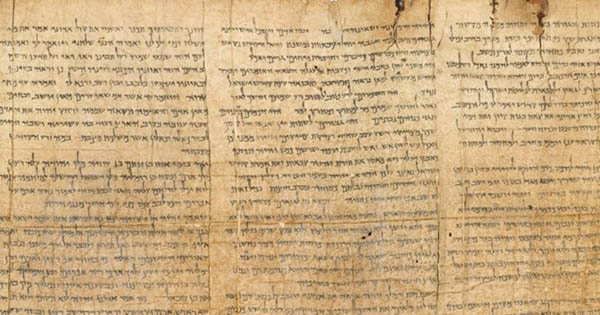The question of whether Jesus Christ is mentioned in the Old Testament has intrigued theologians, scholars, and believers throughout history. At first glance, it seems that the figure of Jesus, as presented in the New Testament, appears for the first time with his birth in Bethlehem, his ministry in Galilee, and his sacrifice on the cross. However, Christian theology teaches that the figure of Christ has been present long before the Incarnation. This article aims to explore whether Jesus is, in fact, mentioned in the Old Testament and how his presence is revealed through prophecies, types, and figures that anticipate his arrival and redemptive mission.
1. Why Does Jesus Appear Concealed in the Old Testament?
The Old Testament, especially in the Judeo-Christian tradition, is much more than just a collection of historical and poetic texts. For Christians, the Old Testament is the preparation, the waiting, and the promise of the coming of the Messiah, who will redeem the world and bring salvation to all humanity. Jesus himself explained this connection to his disciples after his resurrection. In the Gospel of Luke, Jesus appears to two disciples on the road to Emmaus and reveals to them how everything that happened had already been announced in the Scriptures: “And beginning with Moses and all the Prophets, he explained to them what was said in all the Scriptures concerning himself” (Luke 24:27).
Thus, although the name “Jesus” does not explicitly appear in the Old Testament, his figure is anticipated in multiple ways. God prepares his people through prophecies, symbolic images, and historical events, all of which point to Christ.
2. Messianic Prophecies: Echoes of Christ in the Old Testament
One of the clearest ways in which Jesus Christ is “named” in the Old Testament is through messianic prophecies, which paint a detailed picture of who the Messiah will be and what his mission will entail.
Isaiah 53: The Suffering Servant One of the most significant and powerful passages is found in the book of the prophet Isaiah. Isaiah 53 describes a “suffering servant” who will endure pain and rejection on behalf of his people and take upon himself the punishment that others deserve. This servant is “despised and rejected by men, a man of sorrows, and familiar with suffering” (Isaiah 53:3). For many Christian scholars, this passage is one of the clearest descriptions of Christ’s redemptive mission and his sacrifice on the cross. Although Isaiah does not mention the name “Jesus,” the details of this servant closely align with the life, death, and resurrection of Christ.
Micah 5:2: The Place of Birth Another significant prophecy is in the book of Micah, which mentions that the Messiah will be born in Bethlehem. Micah 5:2 says, “But you, Bethlehem Ephrathah, though you are small among the clans of Judah, out of you will come for me one who will be ruler over Israel.” This verse was so explicit that the wise men from the East, when they came seeking the “King of the Jews,” went to Bethlehem, guided by this prophecy. The fulfillment of this prophecy in the birth of Jesus reaffirms the connection between the Old and New Testaments.
Jeremiah 31:31-34: The New Covenant Jeremiah prophesies that God will establish a “new covenant” with his people: “This is the covenant I will make with the people of Israel after that time, declares the Lord: I will put my law in their minds and write it on their hearts.” Jesus establishes this new covenant during the Last Supper, saying, “This cup is the new covenant in my blood, which is poured out for you” (Luke 22:20). Jeremiah’s prophecy anticipates not only Christ’s sacrifice but also the way this sacrifice will transform the relationship between God and his people.
3. Typology: The Figures and Symbols That Point to Christ
Another way in which the Old Testament announces Jesus Christ is through typology: an interpretation that sees certain people, events, and objects in the Old Testament as figures or “types” that prefigure Christ.
The Sacrifice of Isaac (Genesis 22) One of the most well-known examples of typology is the sacrifice of Isaac, Abraham’s son. God asks Abraham to sacrifice his only son, but at the last moment, he stops the sacrifice and provides a ram as a substitute. This story is seen as a foreshadowing of God the Father, who offers his own Son, Jesus, in sacrifice for humanity. Just as Isaac carried the wood for his own sacrifice, Jesus carried the cross. And just as a substitute was found for Isaac, Jesus is the substitute who dies in place of humanity.
The Passover Lamb (Exodus 12) In Exodus, God commands the Israelites to sacrifice a lamb without defect and paint their doorposts with its blood to be protected from the final plague. This blood saves God’s people, and in the New Testament, Jesus is presented as the “Lamb of God who takes away the sin of the world” (John 1:29). His sacrifice is the final act of salvation that frees all believers from sin and eternal death.
Jonah in the Belly of the Great Fish (Jonah 1-2) The story of Jonah is also seen as an anticipation of the death and resurrection of Christ. Jonah was in the belly of the fish for three days, an experience Jesus himself mentions as “the sign of the prophet Jonah,” which foreshadows his own passage from death to resurrection on the third day.
4. Practical Applications: Living the Mystery of Christ in Our Lives
Discovering Christ in the Old Testament has a purpose that goes beyond intellectual understanding. By delving into these texts and seeing the coherence between the Old and New Testaments, we are invited to live our faith integrally, recognizing that God has guided humanity from the beginning. Here are some ways in which this knowledge can enrich our daily lives:
- Increasing our trust in God: The story of salvation shows how God, over the centuries, fulfilled his promises in his own time. We can trust that God will also complete his work in us and in our lives.
- Recognizing the value of waiting and hope: The people of Israel waited centuries for the coming of the Messiah. Like them, we live in a world full of uncertainty and challenges, but these prophecies remind us to wait on God with patience and hope.
- Understanding Christ’s sacrifice: When we understand that Jesus’ life was the fulfillment of a series of events and promises, his sacrifice on the cross takes on even greater depth and meaning. This sacrifice is a call to also live in sacrifice and love toward others.
- Seeing Christ in suffering and redemption: The figure of the Suffering Servant in Isaiah teaches us that God can bring redemption even from the deepest suffering. This helps us face our own pains with the trust that God works even in the midst of our difficulties.
5. Final Reflection: A Continuous Story of Salvation
Although the name “Jesus” does not appear in the Old Testament, his presence is deeply perceived throughout the text. Through detailed prophecies and symbolic figures, God prepared his people for the arrival of his Son. For Christians, this discovery of Christ in the Old Testament not only reaffirms the unity of the entire Bible but also invites us to live with a renewed faith, seeing in each page of Scripture God’s love and faithfulness toward his people.
The story of salvation, which begins in Genesis and culminates in the New Testament with the life, death, and resurrection of Jesus, remains a living story in which we, as believers, are invited to participate. May this knowledge inspire us to deepen our faith, to seek Christ in every moment of our lives, and to trust that the same God who fulfilled his promises in the past will continue to guide and protect his people today.






